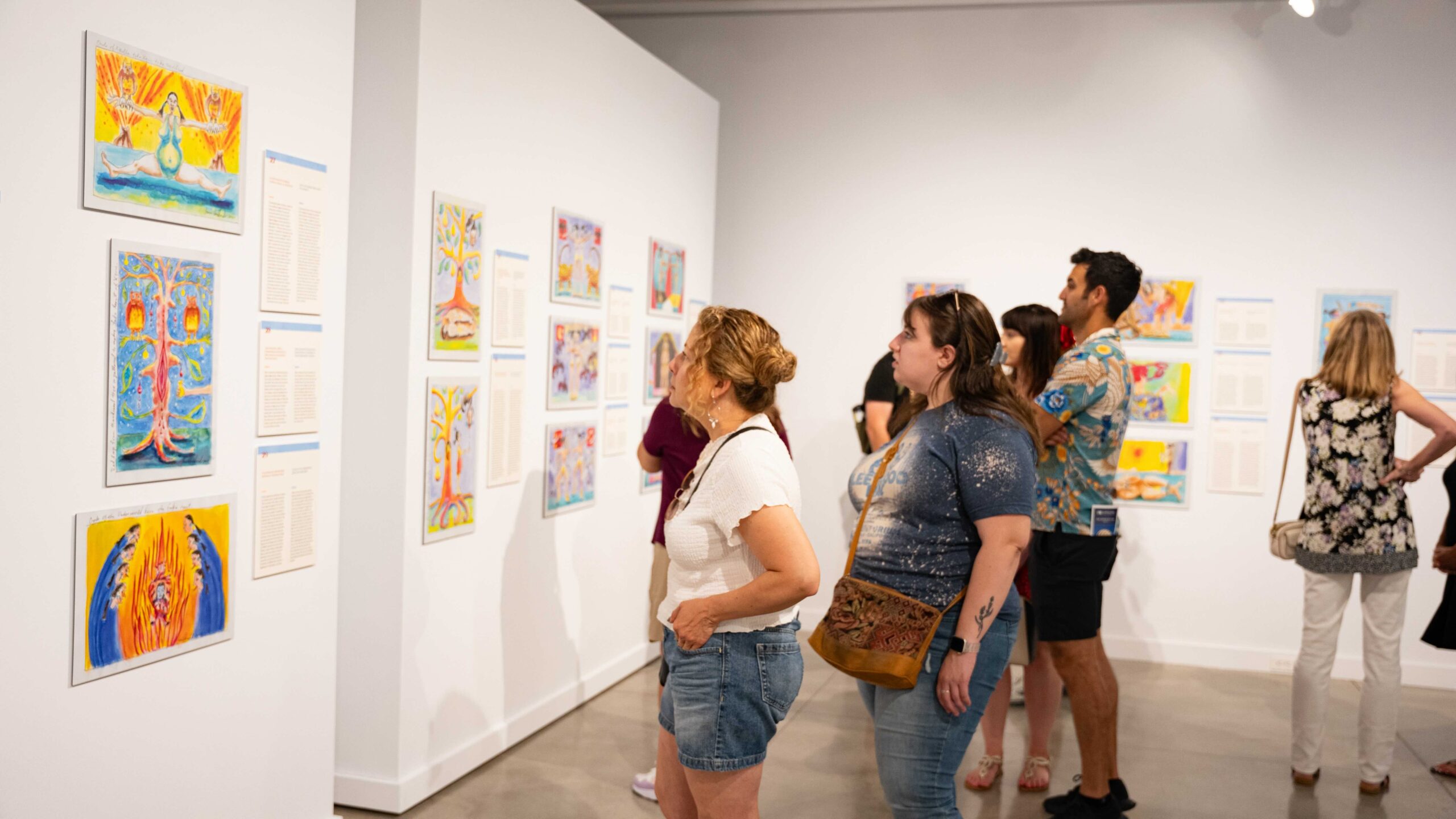Five Arts Advocacy Tips for Your Organization

Visitors enjoy viewing Popol Vuh: The Sacred Book of the Quiche Through Illustration at Mid-America Arts Alliance in Kanas City, Missouri; photo by Maggie Price, courtesy of Mid-America Arts Alliance
When you host an ExhibitsUSA exhibition, we know you consider how the exhibition and its related programming will connect with your community.
At Mid-America Arts Alliance, we understand the importance of advocating for the arts on both local and national levels.
Whether you are advocating for the allocation of government arts funding, or looking to show local and national government officials how the arts improves the lives of people in your community, we’ve compiled a few tips about how to best advocate for your organization.
(Please note: this is general information, not legal advice.)
Tip #1: Develop a relationship
Like many relationships, you should feel comfortable introducing yourself to local, county, state, and federal elected officials. Whether at a civic event or at your own gathering, take the time to say hello and share your “elevator pitch” about what the arts mean to you, your family, and your community.
You may also contact your policymakers’ offices by phone, email, or letter. You are working to get to know the individuals representing your town, state, and country. If your legislator has a newsletter, you may want to sign up to follow their news.
Tip #2: Advocate for your organization
Advocacy, or education about a cause, is part of ensuring the arts are part of your community. Consider participating in your state’s advocacy days and supporting your state arts advocacy organization.
Sharing the impact of exhibitions like these is a great way to remind your elected officials about the impact of the arts on your community and their constituents. Think about the stories to share about your organization’s mission and the arts’ impacts on you and your community. Does this exhibition help drive visitors to your community? Does it educate children and adults about a theme in the arts or humanities?
If legislators don’t hear from constituents about the arts, they may think it is not essential or relevant to your community.
Tip #3: Extend an invitation
Consider inviting your elected officials to your exhibitions or programs at your organization after consulting with your organization’s leadership and/or board. Select a time when you have compelling news to share, and consider inviting them to a performance, a behind-the-scenes tour, or a class. If your legislator attends, recognize and thank them publicly and send a thank-you note.
Tip #4: Talk about your funding
No story without a number, no number without a story. Lean into that golden rule of philanthropic impact and be sure to talk about the impact of funding and how your organization is funded. Is it through a combination of public dollars and private donations? Thank leaders for any funding that comes to your organization from their jurisdiction or office. For example, thank your state senator and representative for any funding you receive from your state arts agency and tell them how you used those support dollars and how they impacted your community.
Tip #5: Know the rules
Advocacy educates people about an issue, policy, or cause and allows them to determine the actions they may or may not take. Lobbying, however, asks a person (or people) to take a specific action.
Many arts organizations are 501c3s and, per the Internal Revenue Service guidelines, cannot lobby significantly for an issue, policy, or cause. Nonprofits cannot support or oppose specific candidates. The National Council on Nonprofits offers guidance about the steps to take in advocacy versus lobbying.